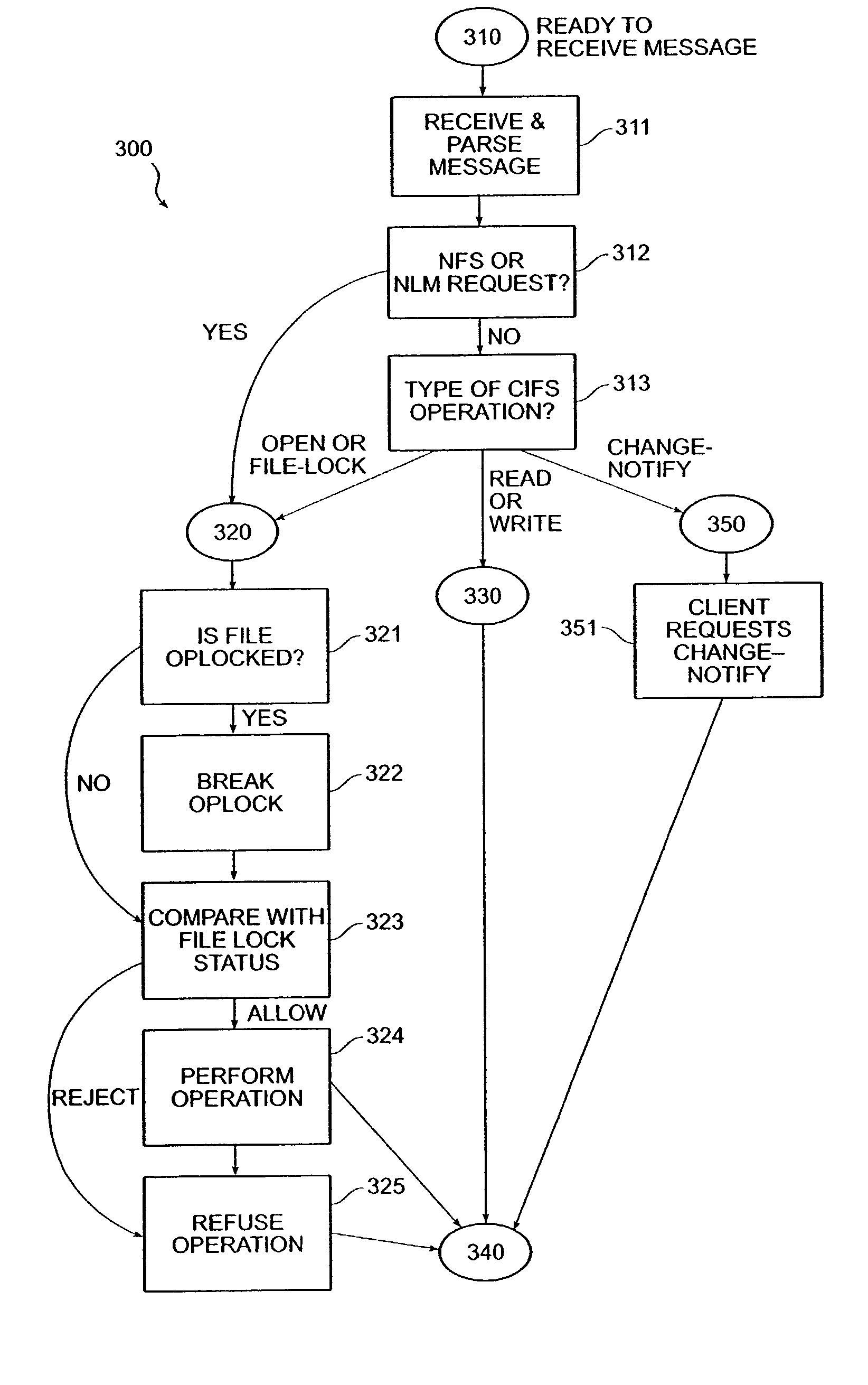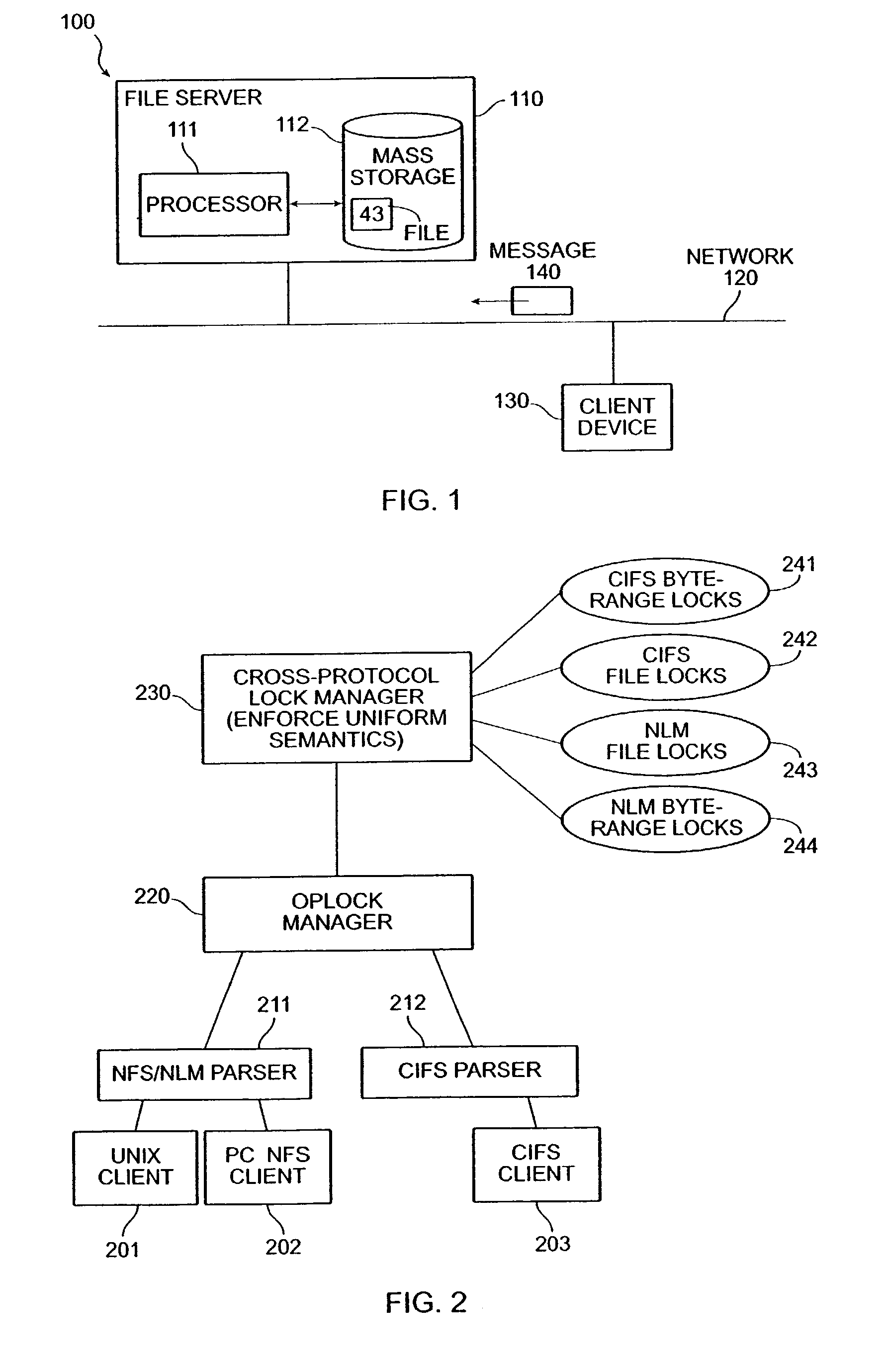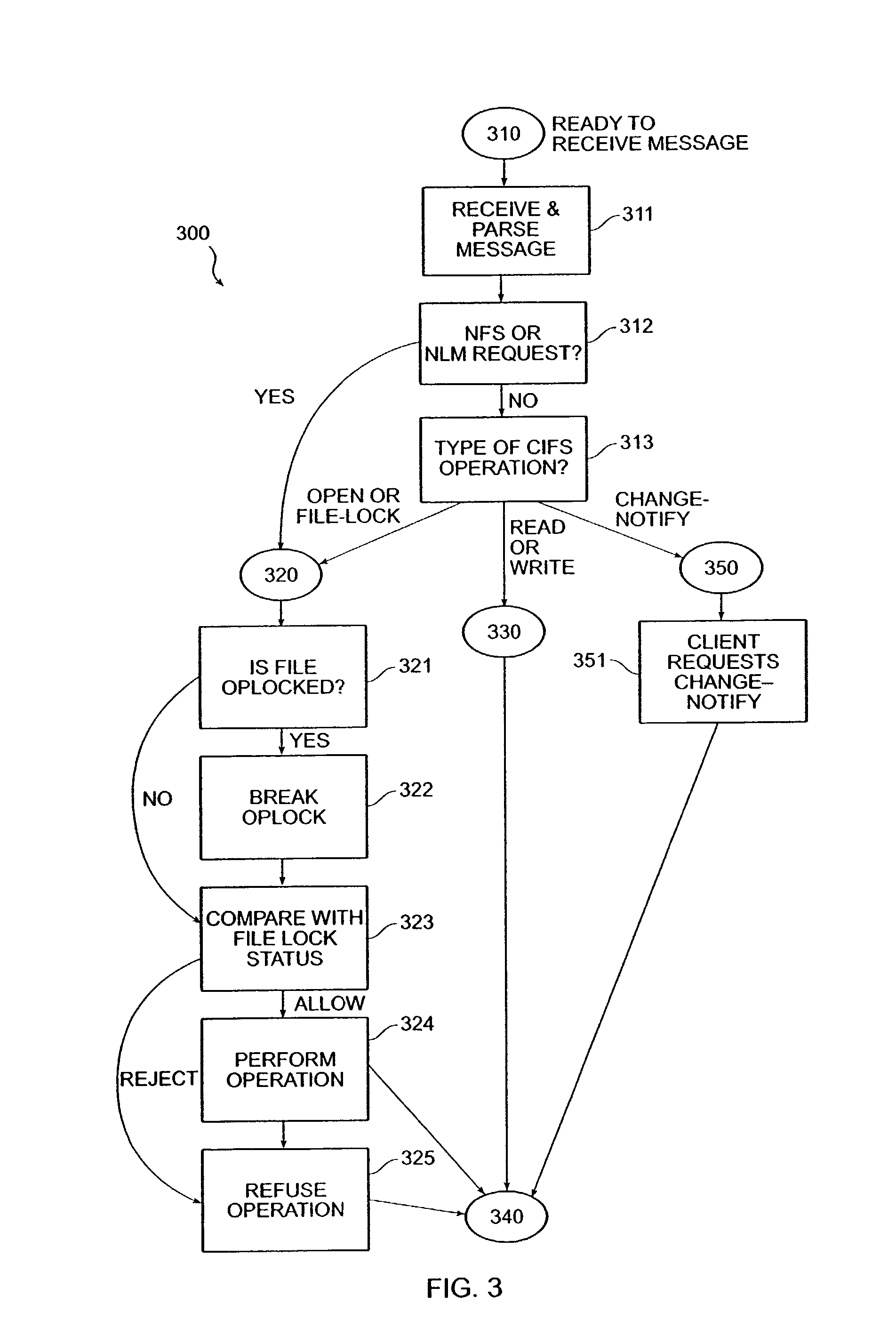Enforcing uniform file-locking for diverse file-locking protocols
a file server and multi-protocol technology, applied in the field of multi-protocol file server locking, can solve the problems of not providing file locking semantics, application failure at the first client device, and many file server protocols with differing and incompatible semantics for file locking and file sharing, etc., to achieve the effect of closing the fil
- Summary
- Abstract
- Description
- Claims
- Application Information
AI Technical Summary
Benefits of technology
Problems solved by technology
Method used
Image
Examples
Embodiment Construction
[0020]In the following description, a preferred embodiment of the invention is described with regard to preferred process steps and data structures. Those skilled in the art would recognize after perusal of this application that embodiments of the invention can be implemented using general purpose processors or special purpose processors or other circuits adapted to particular process steps and data structures described herein, and that implementation of the process steps and data structures described herein would not require undue experimentation or further invention.
System Architecture (Client / Server)
[0021]FIG. 1 shows a first block diagram of a system including a multi-protocol file server.
[0022]A system 100 includes a file server 110, a computer network 120, and a plurality of client devices 130.
[0023]The file server 110 includes a processor 111 and mass storage 112. The mass storage 112 is capable of storing and retrieving a set of files 113 having data for storage and retrieva...
PUM
 Login to View More
Login to View More Abstract
Description
Claims
Application Information
 Login to View More
Login to View More - R&D
- Intellectual Property
- Life Sciences
- Materials
- Tech Scout
- Unparalleled Data Quality
- Higher Quality Content
- 60% Fewer Hallucinations
Browse by: Latest US Patents, China's latest patents, Technical Efficacy Thesaurus, Application Domain, Technology Topic, Popular Technical Reports.
© 2025 PatSnap. All rights reserved.Legal|Privacy policy|Modern Slavery Act Transparency Statement|Sitemap|About US| Contact US: help@patsnap.com



